- The paper refines the Wow! signal’s position, intensity, and frequency by reanalyzing archival Ohio SETI data with modern calibration techniques.
- The methodology employs custom OCR and OpenCV pipelines, cross-validating results with surveys like OSS and NVSS for enhanced accuracy.
- The findings support an astrophysical origin from compact HI clouds while ruling out anthropogenic and instrumental causes.
Revised Properties and Astrophysical Context of the Wow! Signal: Insights from Archival Ohio SETI Data
Introduction
The Wow! signal, detected in 1977 by the Ohio State University Radio Observatory's "Big Ear" telescope, remains a singular and enigmatic event in the history of SETI. Despite extensive follow-up, no repetition has been observed, and the original data have been incompletely analyzed due to archival limitations. This paper presents a comprehensive reanalysis of the original Ohio SETI data, leveraging modern data extraction and calibration techniques to refine the signal's properties—location, intensity, and frequency—and to reassess its possible origins in the context of both astrophysical and anthropogenic hypotheses.
Data Recovery and Methodology
The analysis is based on the recovery and digital transcription of the N50CH dataset, which comprises 50-channel spectral data from 1977–1984, as well as ancillary continuum data. The transcription process utilized custom-trained OCR models (Tesseract 4.0) and OpenCV-based pipelines, with human validation to ensure accuracy. Calibration was achieved by cross-referencing known radio sources from the Ohio Sky Survey (OSS) and the NRAO VLA Sky Survey (NVSS), and by leveraging the stability of the noise tube calibration system.
Signal Characterization: Location, Intensity, and Frequency
Location
The refined analysis yields a more precise localization of the Wow! signal, constraining its origin to two adjacent fields centered at right ascension α=19h25m02s±3s or 19h27m55s±3s, and declination δ=−26∘57′±20′ (J2000). This represents a significant narrowing and a slight displacement from previous estimates, reducing the positional uncertainty by a factor of three.
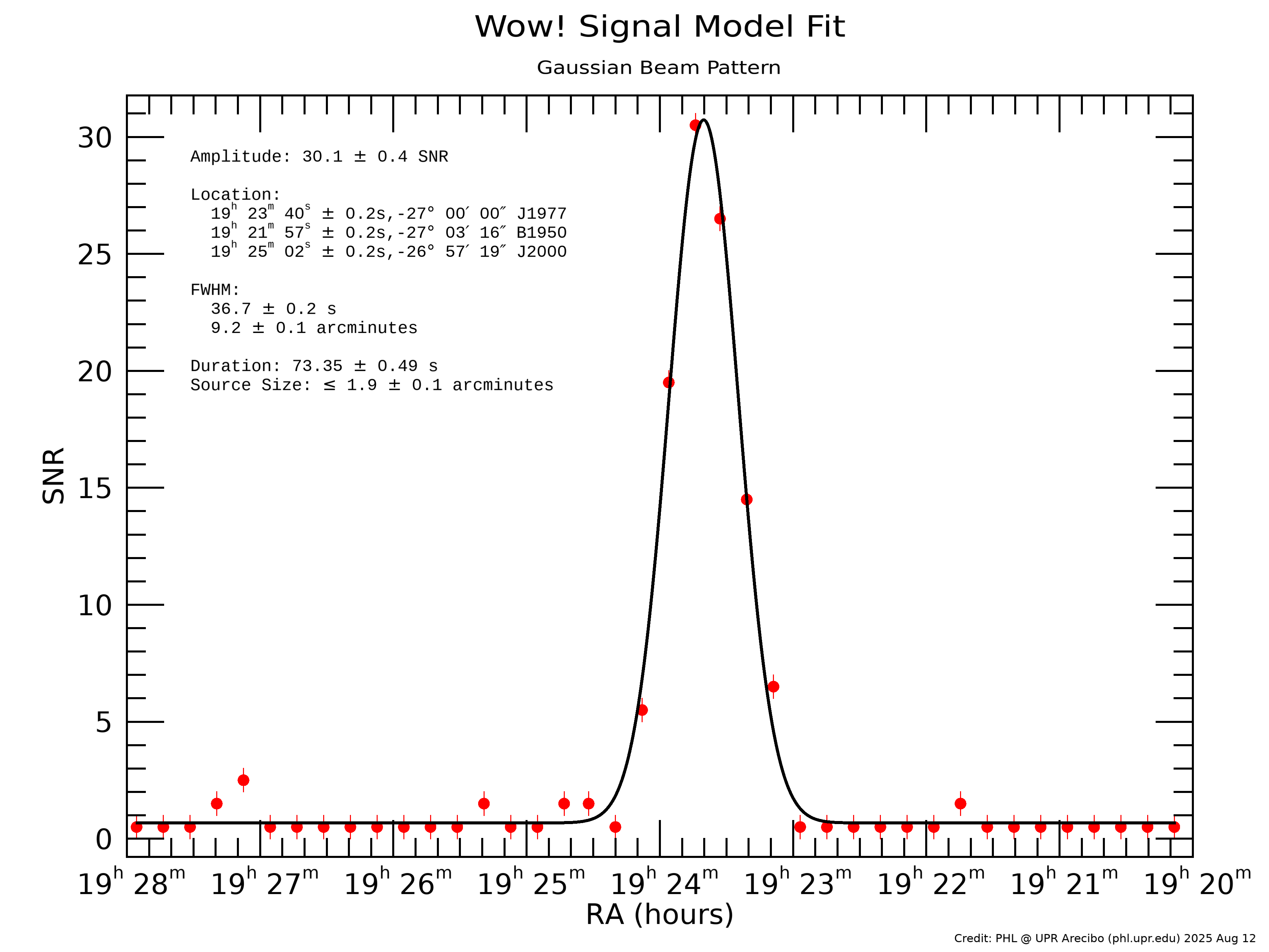
Figure 1: The Wow! fitted with a Gaussian beam profile. The peak exhibits a signal-to-noise ratio (SNR) of 30.1±0.4, centered at the right ascension of 19h25m02s±0.2 s (J2000) at the position of the positive horn. The spatial extent of the source is constrained to be less than 1.9±0.1 arcminutes.
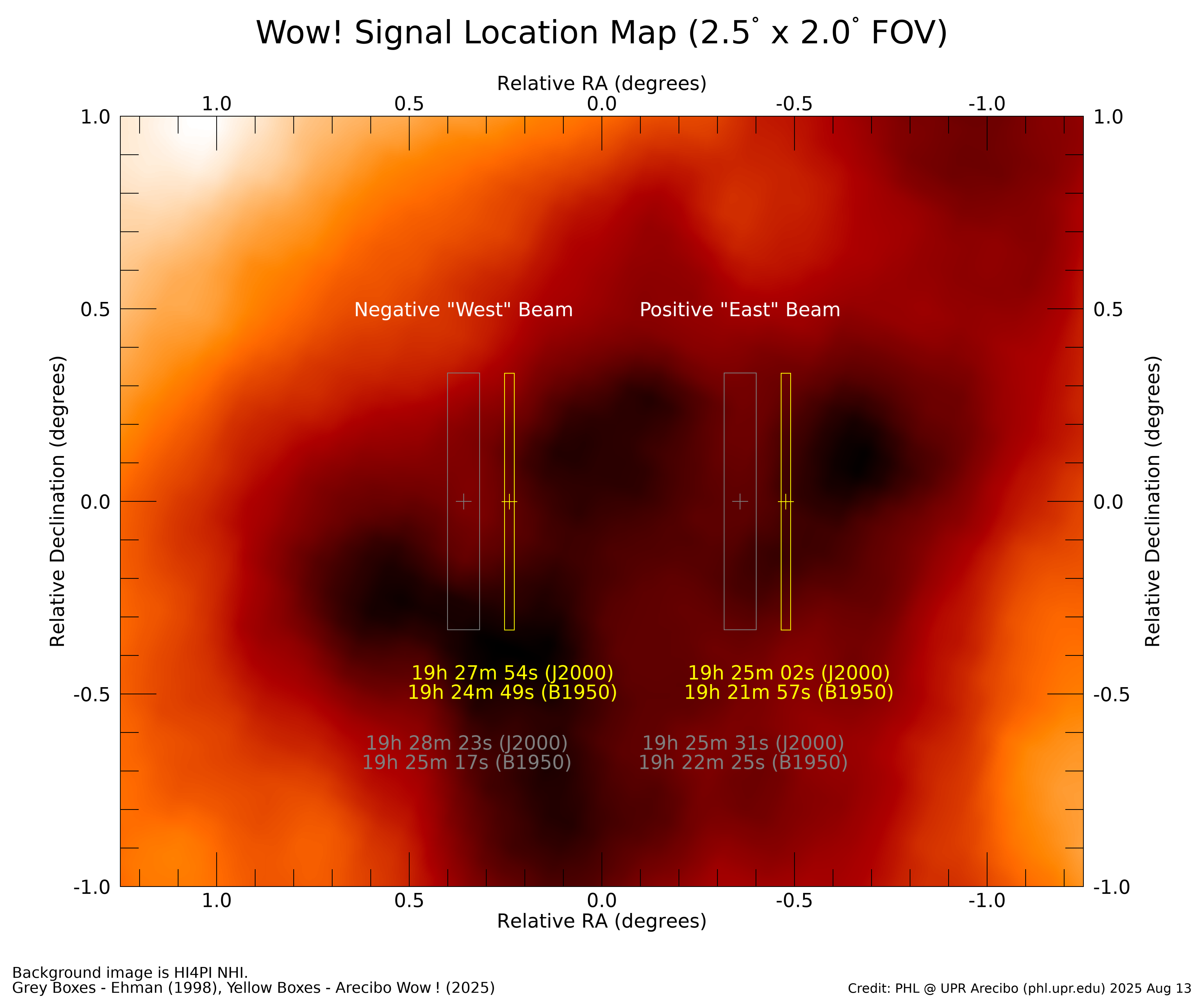
Figure 2: The image shows the possible positions of the Wow! in relation to the galactic HI column density from HI4PI. Gray boxes indicate earlier reported positions, while the revised positions are marked with yellow boxes.
Intensity
The recalibrated flux density of the Wow! signal is ≥256±63 Jy, exceeding previous estimates (54 Jy or 212 Jy). This value is a lower limit, as the source may not have been perfectly centered in the beam, and the actual intensity could be higher. The SNR at peak is 30.1±0.4, consistent with the original detection but now with a more robust calibration.
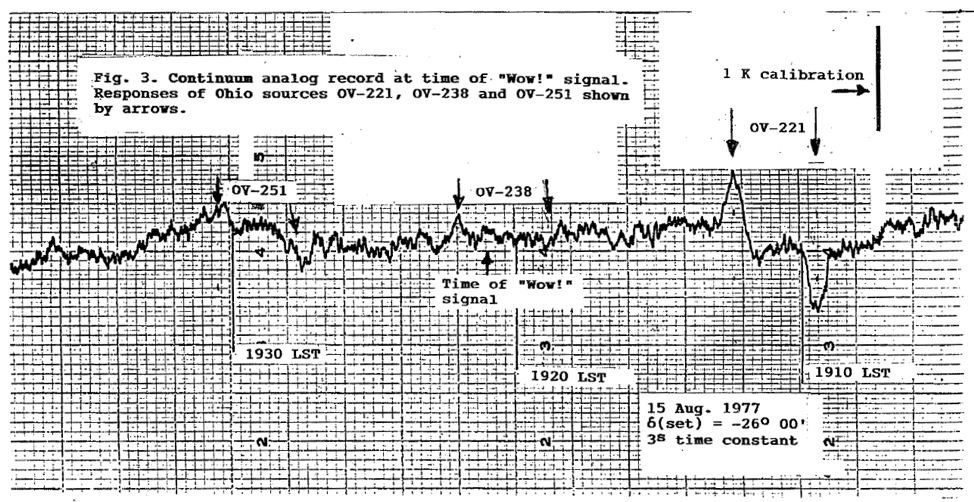
Figure 3: The continuum analog record at the time of Wow!, showing three continuum sources with negative and positive peaks. The Wow! signal in a 10 kHz channel is not perceptible in this plot due to averaging across an 8 MHz bandwidth.
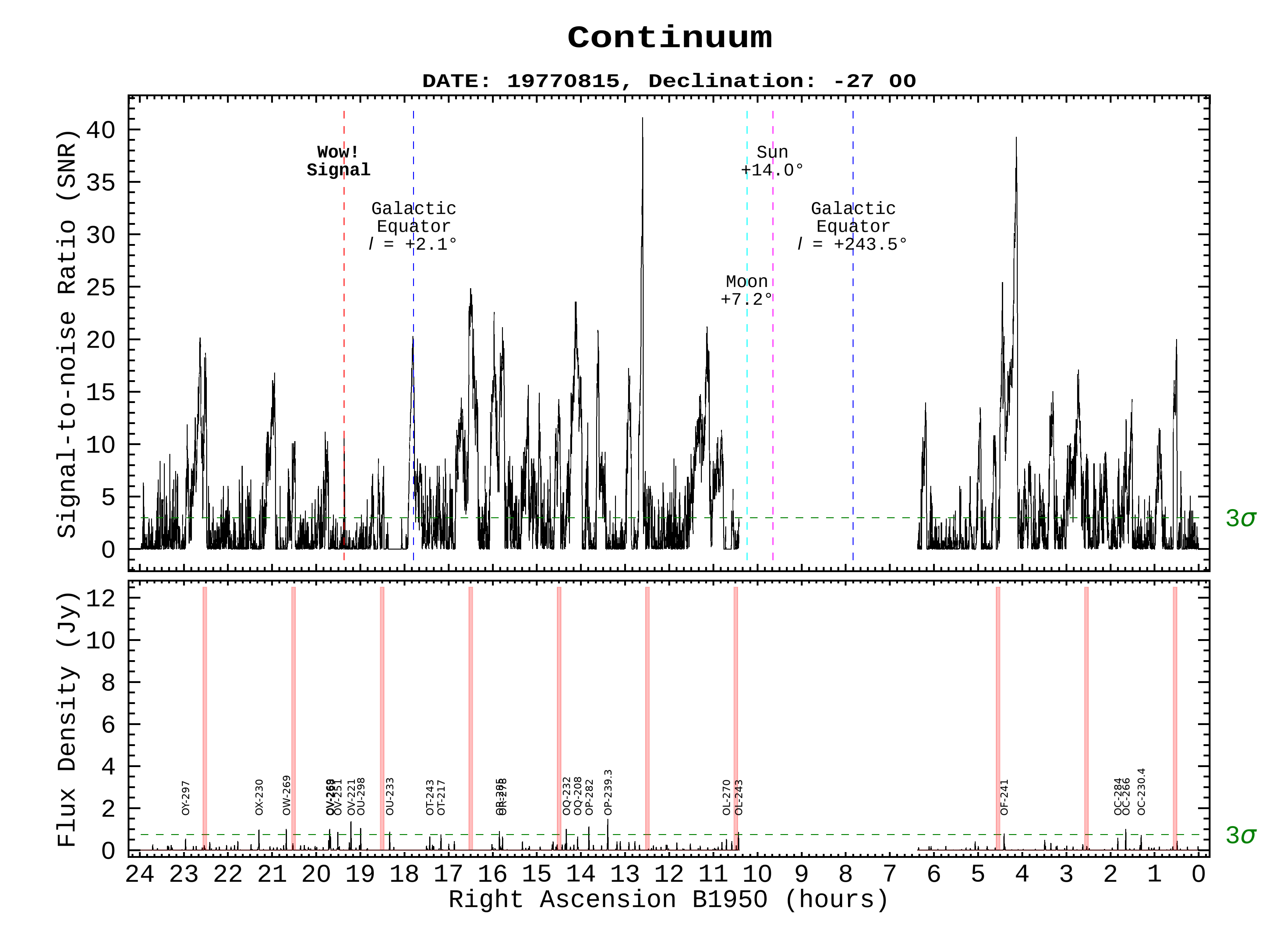
Figure 4: The continuum SNR derived from the 50-channel output on August 15, 1977. No radio sources at the specified declination are discernible in the SETI receiver; only noise tube signals are evident.
Frequency and Radial Velocity
The frequency of the Wow! signal is revised to 1420.726±0.005 MHz, corresponding to a heliocentric radial velocity of −84±1 km/s and a local standard of rest (LSR) velocity of −74±2 km/s. This is a substantial blueshift relative to the hydrogen line and is inconsistent with the expected velocity of typical Galactic disk HI, but is compatible with intermediate-velocity HI clouds (IVCs).
Astrophysical and Non-Astrophysical Explanations
Astrophysical Hypotheses
The paper provides additional support for an astrophysical origin, particularly emission from small, cold HI clouds. Two additional narrowband signals (Wow2 and Wow3) with similar beam patterns but lower intensity were identified in the archival data and confirmed to be associated with compact HI regions.
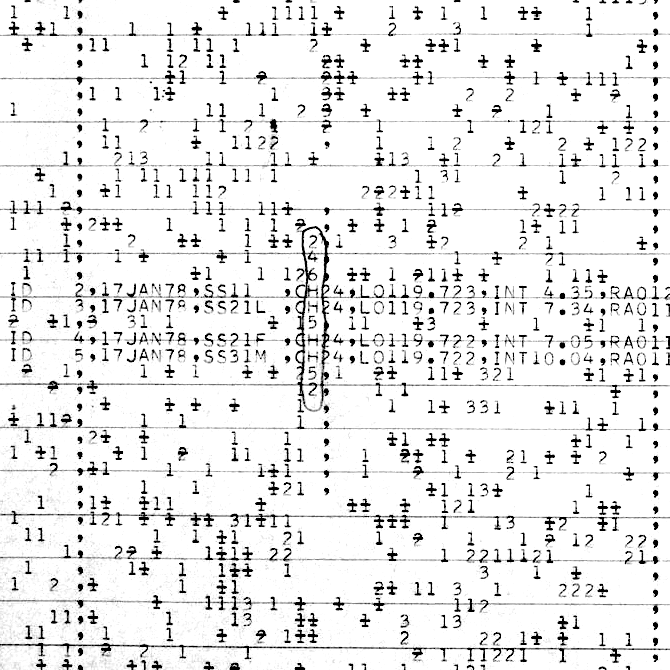
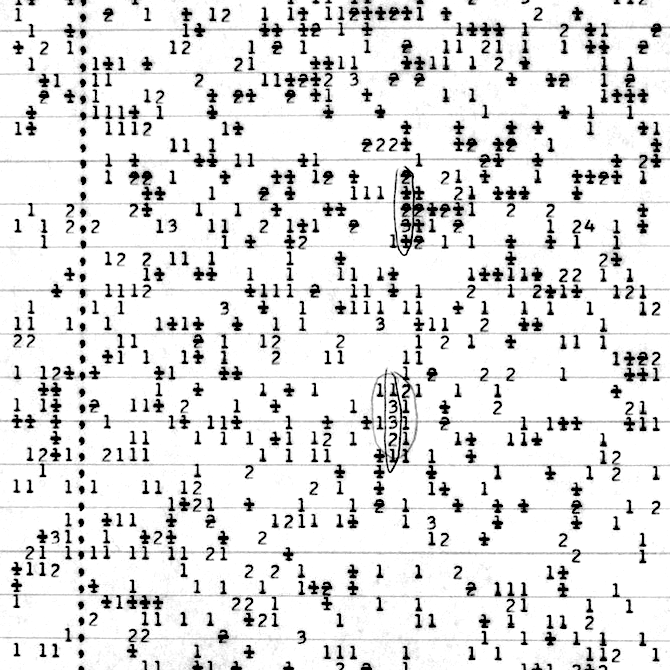
Figure 5: Examples of two narrowband signals in the Ohio SETI data from January 1978, designated Wow2 and Wow3, similar to the Wow! but at reduced intensity and different locations.
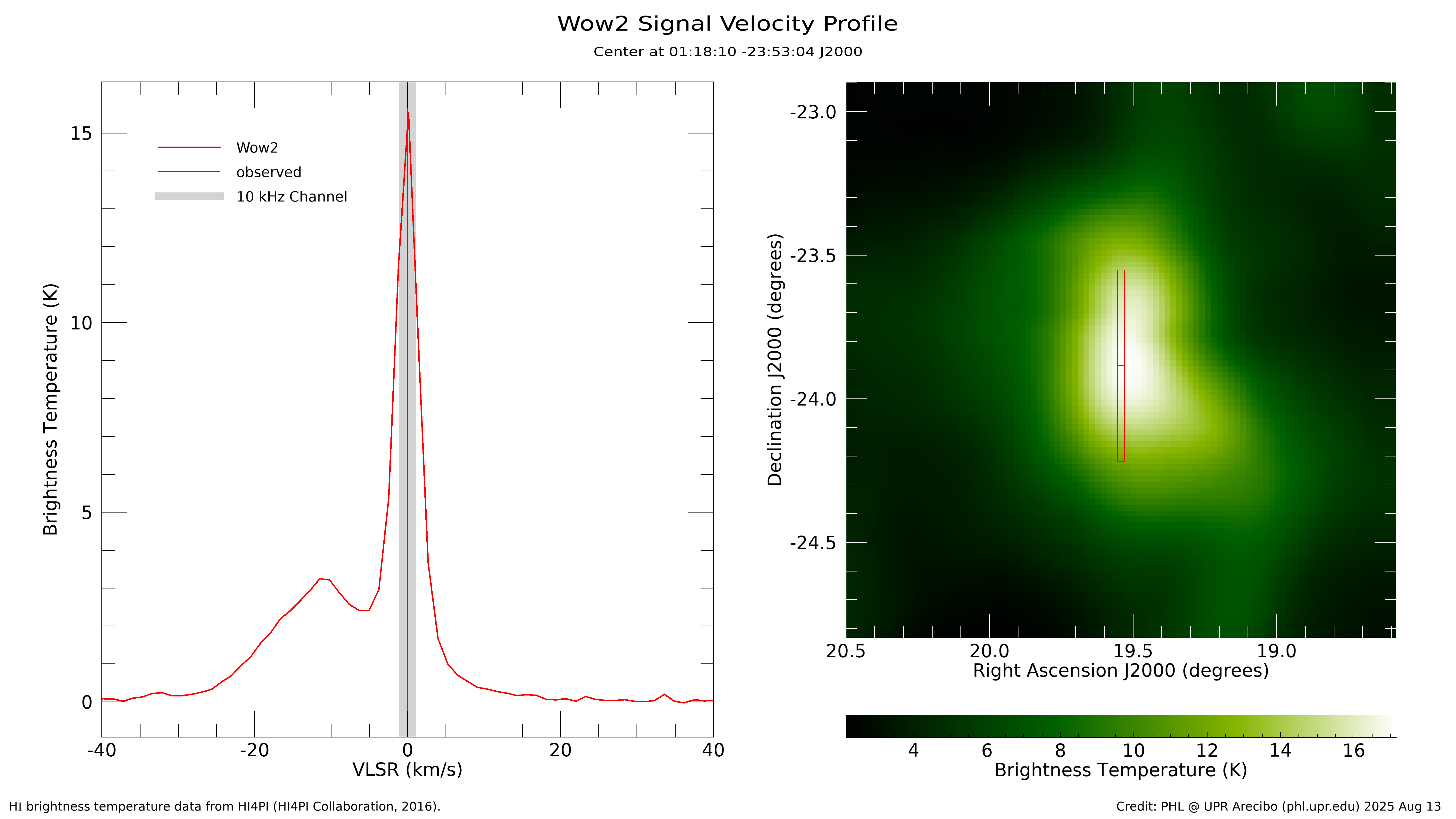
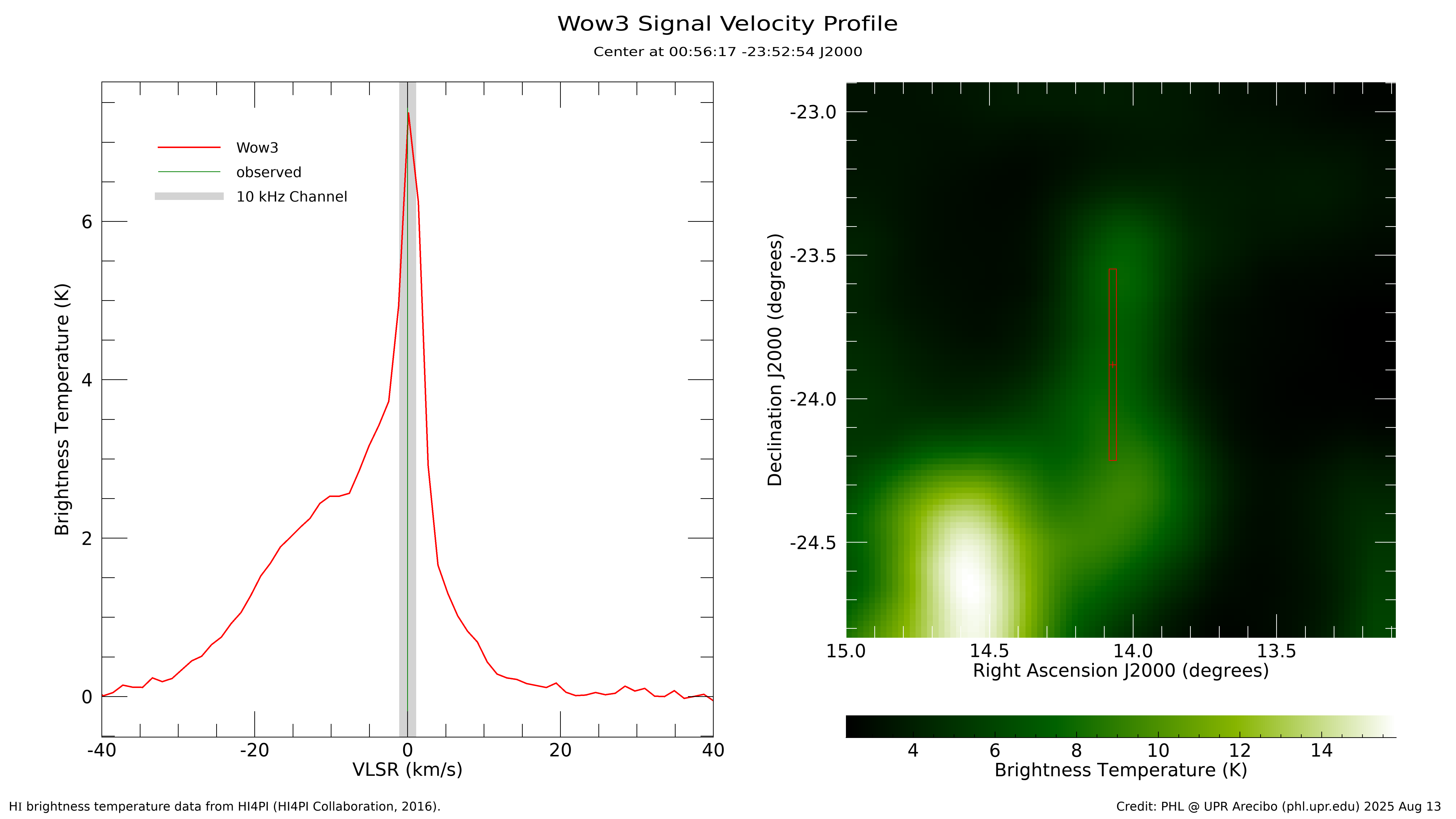
Figure 6: Velocity profiles and brightness temperature maps from HI4PI for Wow2 and Wow3, confirming association with small HI regions and velocity profiles consistent with Galactic HI.
The observed velocity of the Wow! signal is within the range of IVCs, which are known to exhibit LSR velocities between 25 and 90 km/s. The possibility of a maser flare or superradiance burst from such a cloud is considered plausible, given the narrowband nature and intensity of the event.
Non-Astrophysical Hypotheses
A comprehensive review of alternative explanations—including terrestrial RFI, harmonics from UHF TV transmitters, satellite reflections, solar activity, and internal instrumental artifacts—finds no credible evidence supporting these scenarios. The probability of a random RFI event producing the observed SNR and beam pattern is calculated to be ∼10−9, and no relevant transmitters or satellites were operational at the required frequencies and sky positions in 1977. Solar and geomagnetic activity were minimal during the event, and the signal's duration and profile are inconsistent with known satellite or solar phenomena.
Implications and Future Directions
The revised properties of the Wow! signal—narrower localization, higher intensity, and significant blueshift—provide the most stringent constraints to date on its origin. The compatibility with IVCs and the demonstration that compact HI clouds can produce similar signals suggest that future SETI and time-domain radio surveys should systematically account for such astrophysical transients. The lack of evidence for anthropogenic or instrumental origins further strengthens the case for a natural, albeit rare, astrophysical phenomenon.
The archival Ohio SETI dataset remains underexplored, and systematic analysis may yield additional transient events of interest. The methodology developed here—combining modern data extraction, calibration, and cross-survey validation—sets a standard for future reanalyses of legacy datasets.
Conclusion
This paper delivers a significant revision of the Wow! signal's properties, establishing a more precise location, higher flux density, and a frequency consistent with high-velocity Galactic HI. The evidence favors an astrophysical origin, most plausibly a transient event in a compact HI cloud, and effectively excludes known anthropogenic and instrumental explanations. These results not only inform the ongoing debate regarding the Wow! signal's nature but also provide a methodological framework for the analysis of archival SETI data and the identification of rare, high-intensity radio transients in the Galaxy. Future work should focus on systematic mining of the Ohio SETI archive and targeted observations of the revised Wow! coordinates with next-generation radio facilities.







